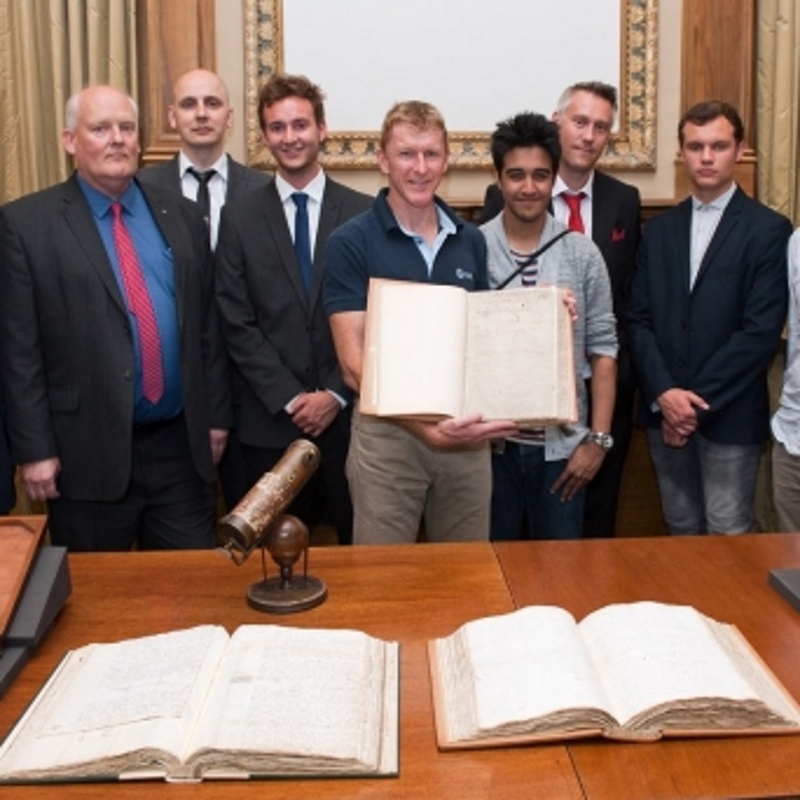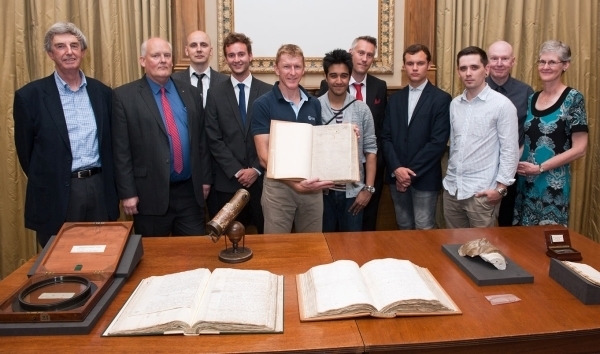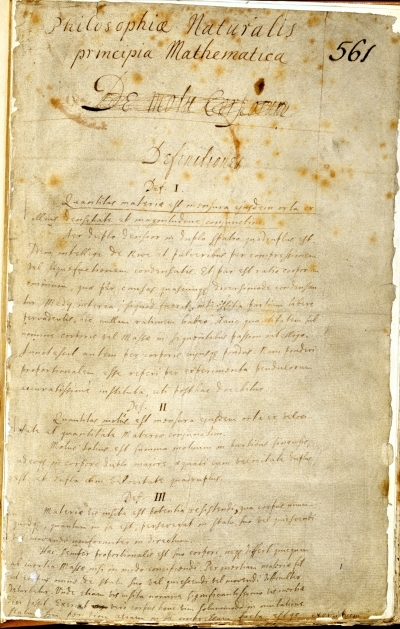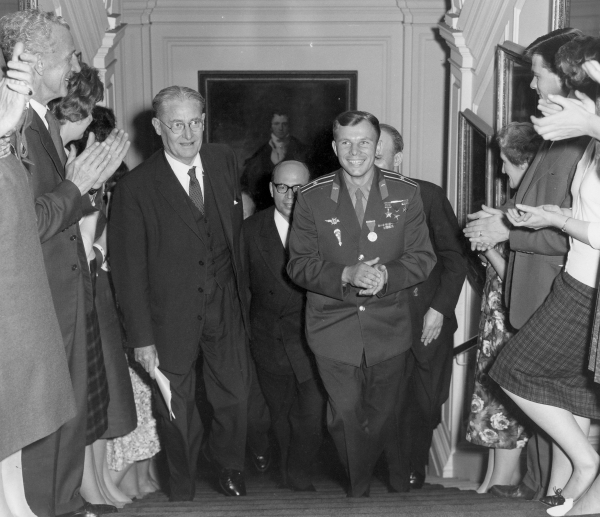Keith Moore tells the story of Sir Isaac Newton's magnum opus, and its connection to a new space mission involving British astronaut Tim Peake.

It’s a happy day when I get the chance to blog about not one, but two pet topics. The manuscript thing you know about already, but I collect something even rarer – astronauts. I’m still a child of Apollo and believe me, the Royal Society is just the place to be.
The rather wonderful people of the European and UK Space Agencies were here in force on Wednesday evening to reveal the name selected for British astronaut Tim Peake’s mission into space to members of the public who had suggested it. Now at the risk of alienating our many friends and readers from the USA, if the competition had been over there, I’d be writing a Star Trek blog about now. But those erudite Europeans opted for something very special: Principia.

Tim Peake holding the Royal Society’s Principia manuscript
Sir Isaac Newton’s great work, Philosophiae Naturalis Principia Mathematica (The mathematical principles of natural philosophy) is commonly abbreviated to the single word which, not long after it was written, defined how the universe was understood. Newton, of course, had been ruminating about the mechanics of the heavens since the 1660s and (if we are to believe the great man) the fall of that apple. But Newton really wasn’t too interested in the business of publication and frequently grumbled about the impact of public discourse on his private studies. By 1684 Edmond Halley (1656-1742) had managed to stimulate a few pages from the great mathematician and these, under Halley’s diplomatic tour-de-force would develop into the Principia.
The Royal Society’s Principia manuscript is a fascinating document, certainly the version from which the 1687 printed first edition was produced. Newton presented Book 1 of the text to the Society at the end of April 1686 and the order to print it was given within a month. Given the financial tribulations surrounding printing of Willughby’s Historia Piscium, this was a triumph of hope over expectation, especially since even at this late stage the whole Principia volume was expanding: Books 2 and 3 would appear in the next year, all of it copied by the unfortunate amanuensis, Humphrey Newton – the target of more Newtonian ill-temper and complaints that he 'understood not what he copied'. Newton’s and Halley marginalia and corrections are sprinkled lightly over its pages alongside the compositors’ inky thumbprints. I like to think of the book in terms of Halley’s words to King James II on its Royal presentation: 'if ever Book was so worthy the favourable acceptance of a Prince, this.'

Handwritten title page of our Principia manuscript (MS/69)
So, to name Tim Peake’s mission after the book in which gravity and the laws of motion were described is very appropriate, particularly since his work on the International Space Station will support a longstanding microgravity research programme among many other mission highlights. Space people are busy, but fortunately, Tim has managed some time out to enjoy looking over the Society’s manuscript and, we hope, made a very direct connection.
We often think of Royal Society Fellowship as the world’s most exclusive club, but I do wonder. Tim Peake follows in the footsteps of other star-men and women who have visited the Society: from Yuri Gagarin and Valentina Tereshkova, through Neil Armstrong, Jim Lovell and Gene Cernan (that was a good day to be a librarian) and more recently the crew of the Atlantis space shuttle. Which club would you choose to be a member of?
I’ve made my own decision on that. Rumour has it that the next ESA-sponsored competition might be a schools contest to design a mission patch. You’ll excuse me, but I have to find my crayons now.

Yuri Gagarin at the Royal Society, 1961

